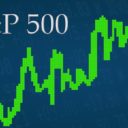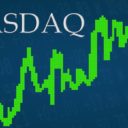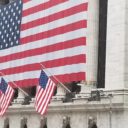

We may be in the middle of a full-throttled firehose of earnings reports, but it’s still worth noting that Tuesday was the last day of the month. Any which way you slice it, the metrics of stock market performance in April were very acceptable, and that may even be an understatement when stacked on to Q1 performance.
Let’s take a closer look.
The Dow Jones Industrial Average (^DJI) at 26593 gained +2.5% in April and is +15.3% YTD. We can’t overstate how impressive for the ^DJI to post a gain in April, despite the number and severity of single-stock declines. Those were largely driven by earnings and were absorbed by the Blue Chip barometer during the month.
Of course this has led to some underperformance vis-a-vis the NASDAQ Composite (^IXIC) and S&P 500 (^SPX), but the ^DJI sitting just less than 1% from its closing high of 26,828 has to be considered a “win”.
The S&P 500 at 2945.83 posted a fresh closing high on the last day of April for gain of +3.9% on the month. The S&P is +17.5% YTD. The S&P has benefitted from solid gains the last 4 months by Technology, Energy, and even Health Care after a brief swoon in early April.
The NASDAQ Composite at 8095.39, added +4.7% in April to bring its outperformance in 2019 to +22% YTD. Social Media stocks have weathered the storm in large part from privacy and cyber security issues.
Semiconductors have had sharp gains until a couple of earnings faux pas — Intel Corp (INTC), this means you — just in the last week. Old-School-Tech has benefitted from Cap-Ex spending-fueled upgrades that have been overdue in the corporate world.
Note the string of fresh ATHs by Microsoft Corporation (MSFT) in the last month.
The NASDAQ posted a number of ATHs of late, most recently on April 29 with a print of 8161.85. Of course Tuesdays set back was largely attributable to the “Hot Mess” of an earnings report from Google.
The Russell 2000 (^RUT) at 1591.21 gained +3.3% in April and was +18% YTD. While the Russell is “in line” with the larger capitalization Major Market Averages, it has struggled to get through the 1600 level. The Russell is also at an 8.6% deficit to its closing high of 1740.75 from August 31 of last year.
We would really like to see the Russell 2000 get through its immediate resistance at the 1600 level. It has a history of rallying into its annual reconstitution late in late June, which this year is set for June 28. One positive sign is the Russell has held above the 200 day moving average for close to 2 weeks, the longest stretch since early October last year.
Put these Gains in Perspective
Although, stocks are off to a great start one-third of the way through 2019, we are faced with one caveat and one big question. The caveat is that not only is it unrealistic to expect current YTD returns will be annualized, we also need the perspective that measuring gains from year end 2018 lacks proper context. While it has long been convention to gauge performance by the calendar, It’s extremely rare to have extreme market volatility in late December. The S&P 500 lost over -11% in 7 trading days from December 13 to the 24th.
We think it would be most instructive to gauge where we are now off where the market closed on October 3 of last year. October 3 was the day that Federal Reserve Chairman Powell made his oft-referenced statement that base interest rates “were a long way from neutral”.
There is no dispute that FED watchers and market strategists viewed this as a definitive policy proclamation from the FED Chairman that alternate meeting rate hikes would continue well into 2019. The interpretation from most observers and strategists was that not until the base rate hit 3.5% at midyear 2019, would the FED reassess their position.
Throughout the market selloff during Q4, whenever the question of “What triggered this market downturn?” was posed, the near universal response was The Powell speech and Q&A in early October.
For Those Still With Me, Let’s Take a Look
Ironically, the Dow Jones Industrials made their ATH of 26.828.39 on October 3 of last year. At 26,593, the Dow was just shy of 1% from that ATH. With the damage done to individual stocks in the Dow of late, this is impressive.
The S&P 500 at 2945.83 is slightly less than +1% higher than where it closed on October 3 at 2925.51. Again, the S&P 500 currently sits at an ATH.
The NASDAQ Composite at 8095.39, like the S&P 500 is just less that +1% higher than were it settled on October 3 at 8025.09
The Russell 2000 at 1591.21 is -4.8% lower than it was on October 3 when it closed at 1671.29
So what’s the take away here? On the surface the Dow, S&P, and Nasdaq are all within 1% of our preferred October 3 gauge. We don’t like to see the Russell underperform to this extent, but the Big Three are pretty much where they were 7 months ago. Does that mean the rally has run its course? Should we anticipate a significant correction? Or worse?
Why the Market Landscape is Different
There is actually a very good case to be made that the market is much more attractive than it was last fall. There are a few critical macro valuation factors that support the case. I’ll make this very brief.
- The FED has shifted its stance from hiking rates to neutral. Yes, they are still “tightening” a bit letting bonds in their balance sheet “run off”, but they have given a time table to wind that down by September of this year.
- Economic Expansion marches on. Q1 GDP hit +3.2% last week, a full point higher than both Q1 and Q4 in 2018.
- The interest rate on the benchmark 10 year treasury note is in a range of 2.50% to 2.60% compared to a range of 3.10% to 3.20% in early October last year.
- Crude oil prices are approximately $8/barrel lower than last fall on both Brent Crude and West Texas Intermediate.
- Inflation is lower. Core PCE; the FEDs preferred inflation gauge Is +1.7% year over year, compared to +2.0% last fall.
Obviously there are always fluid dynamics in the financial markets. In English, things can change in a hurry. However, in the static moment of early May 2019, we are in a more favorable environment than October 4 2018.
Stay tuned and enjoy the ride.






